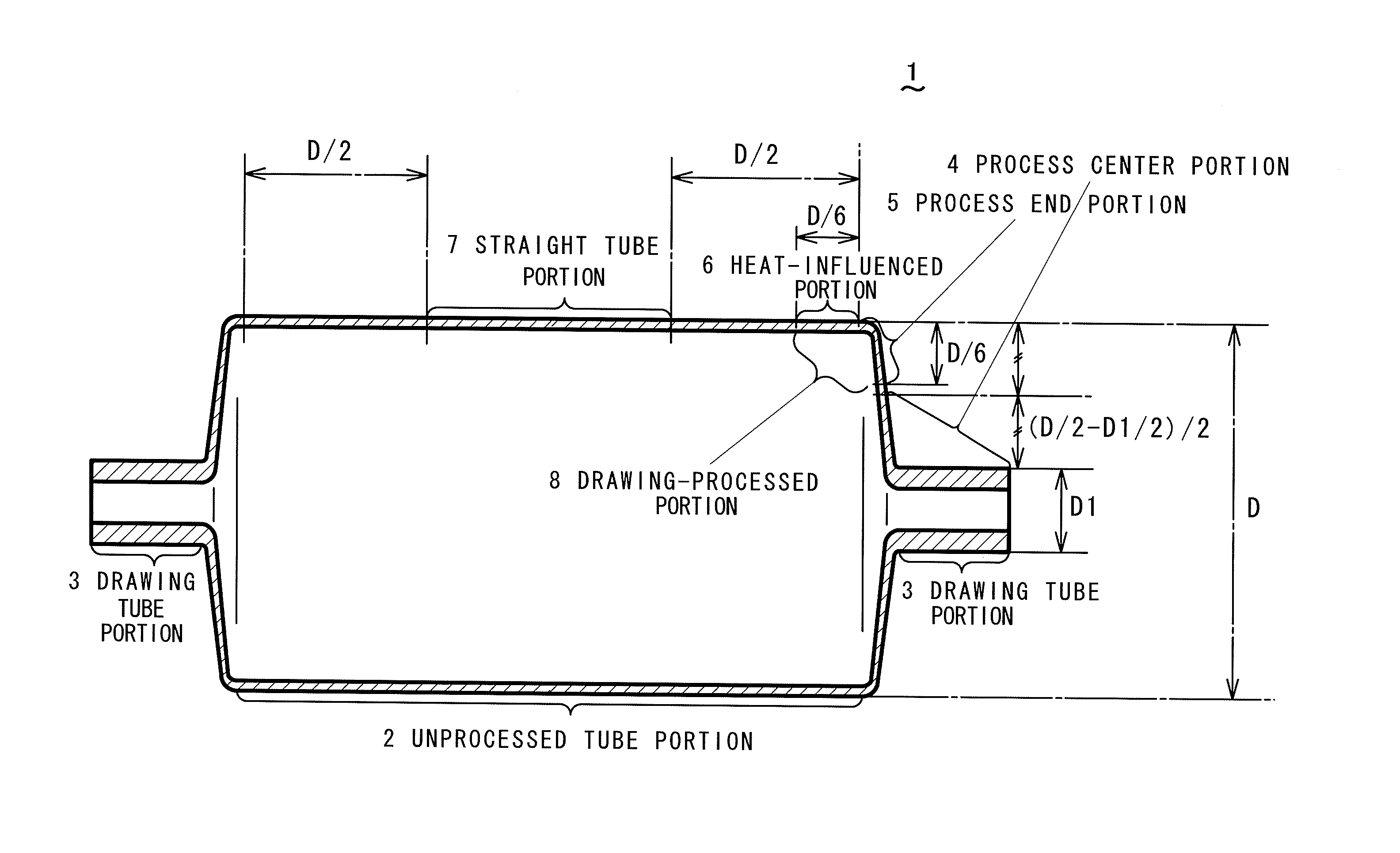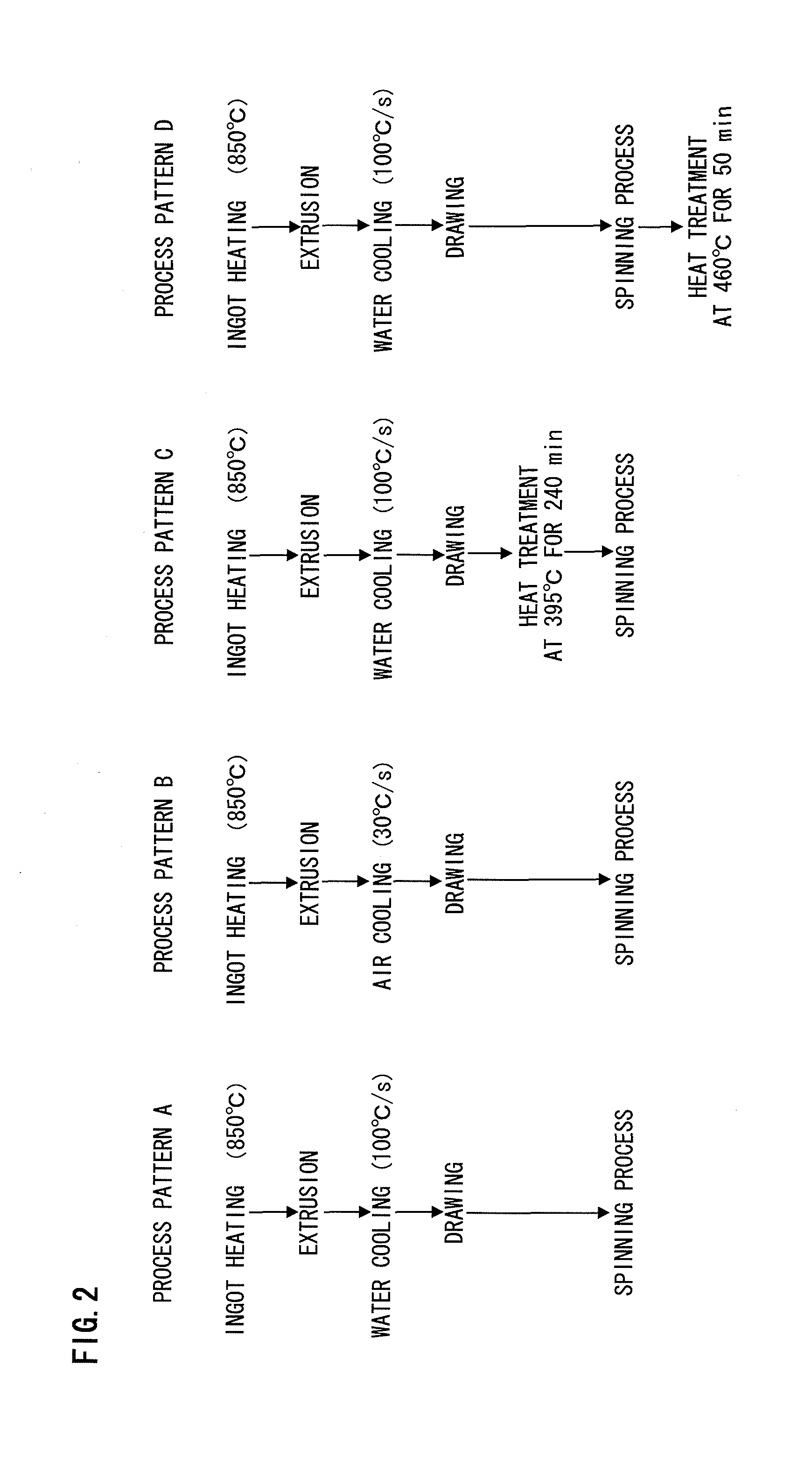High strength and high thermal conductivity copper alloy tube and method for producing the same
a high-temperature conductivity, copper alloy technology, applied in the direction of metal rolling arrangement, transportation and packaging, light and heating equipment, etc., can solve the problems of low pressure resistance of the process end portion b>5/b> and the heat-influenced portion b>6/b>, low productivity of drawing-processed copper alloy tubes formed in cold states, and decrease the strength. , to achieve the effect of high strength, improved thermal conductivity and high strength
- Summary
- Abstract
- Description
- Claims
- Application Information
AI Technical Summary
Benefits of technology
Problems solved by technology
Method used
Image
Examples
first embodiment
[0049]A high function copper tube according to a first embodiment of the invention will be described. In the invention, alloys (hereinafter, referred to as first invention alloy, second invention alloy, third invention alloy, and fourth invention alloy) having alloy compositions of the high function copper tubes according to first to fourth embodiments are provided. In the alloy compositions described in the specification, a symbol for element in parenthesis such as [Co] represents a content of the element. Invention alloy is the general term for the first to fourth invention alloys.
[0050]The first invention alloy contains Co of 0.12 to 0.32 mass % (preferably 0.13 to 0.28 mass %, more preferably 0.15 to 0.24 mass %), P of 0.042 to 0.095 mass % (preferably 0.046 to 0.079 mass %, more preferably 0.049 to 0.072 mass %), and Sn of 0.005 to 0.30 mass % (preferably 0.01 to 0.2 mass %, more preferably 0.03 to 0.16 mass %, or particularly, in the case of needing high thermal conductivity, ...
second embodiment
[0144]A high function copper tube according to a second embodiment of the invention will be described. In the embodiment, differently from the first embodiment, a pressure-resistance and heat-transfer vessel is produced by a cold drawing process such as a swaging process, “Hera-shibori”, and roll forming, instead of the spinning process.
example
[0145]The same high function copper tubes as the example of the first embodiment were produced, and then the pressure-resistance and heat-transfer vessels were produced by the cold drawing process. Three produced pressure-resistance and heat-transfer vessels were prepared for each production condition. As for two vessels among them, one end of the drawing tube portion 3 was connected to a jig made of brass for a pressure-resistance test by phosphorus copper lead (7 mass % P—Cu), and the other end was sealed up by phosphorus copper lead. As for one of the two vessels, all properties such as metal structure, Vickers hardness, and conductivity were examined. As for the other of the two vessels, pressure resistance was examined. The vessel was not subjected to brazing, a part corresponding to the process end portion 5 and the heat-influenced portion 6 was cut with the pressure-resistance and heat-transfer vessels as it was, was immersed in salt bath heated to 700° C. for 20 seconds, was...
PUM
 Login to View More
Login to View More Abstract
Description
Claims
Application Information
 Login to View More
Login to View More - R&D
- Intellectual Property
- Life Sciences
- Materials
- Tech Scout
- Unparalleled Data Quality
- Higher Quality Content
- 60% Fewer Hallucinations
Browse by: Latest US Patents, China's latest patents, Technical Efficacy Thesaurus, Application Domain, Technology Topic, Popular Technical Reports.
© 2025 PatSnap. All rights reserved.Legal|Privacy policy|Modern Slavery Act Transparency Statement|Sitemap|About US| Contact US: help@patsnap.com



